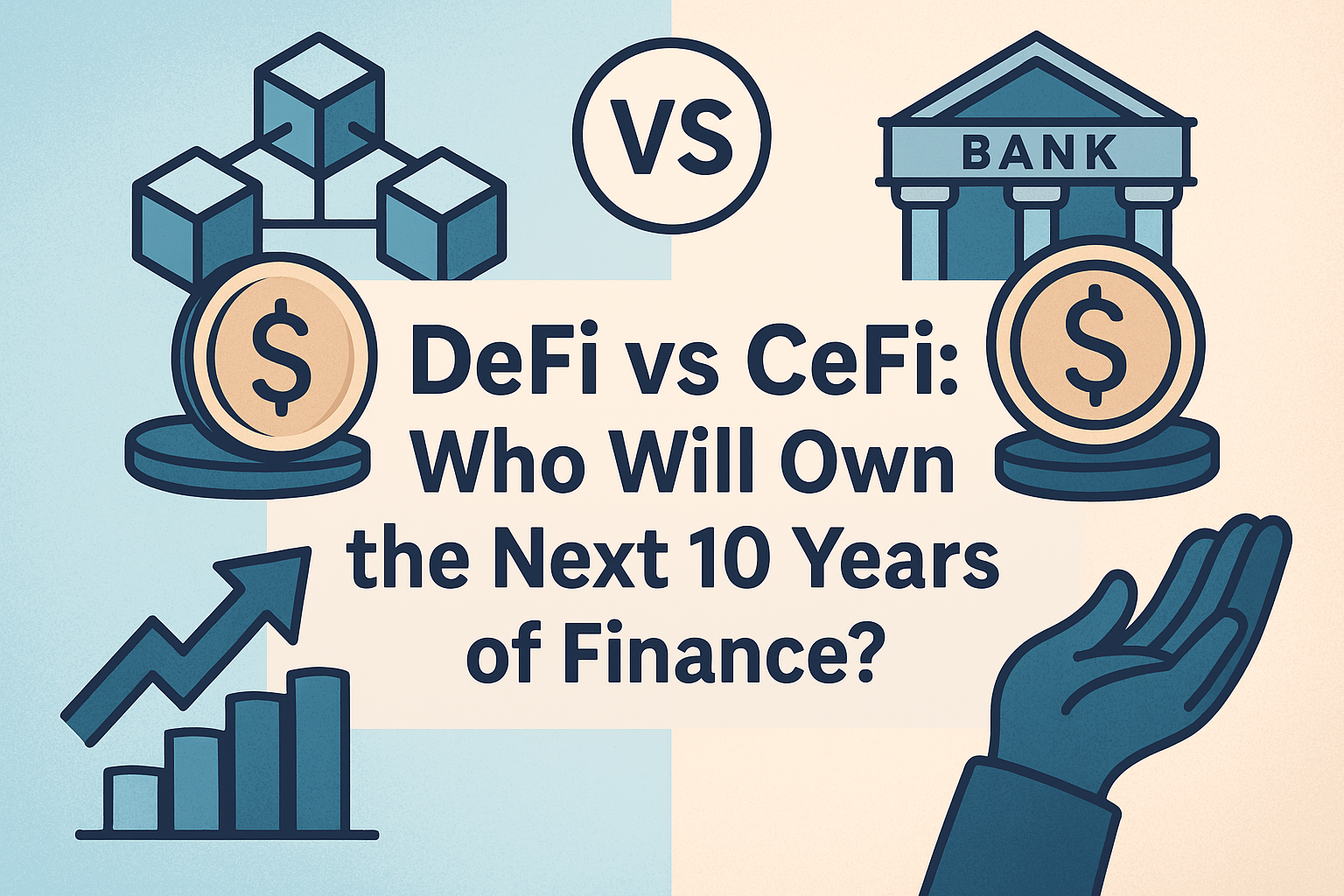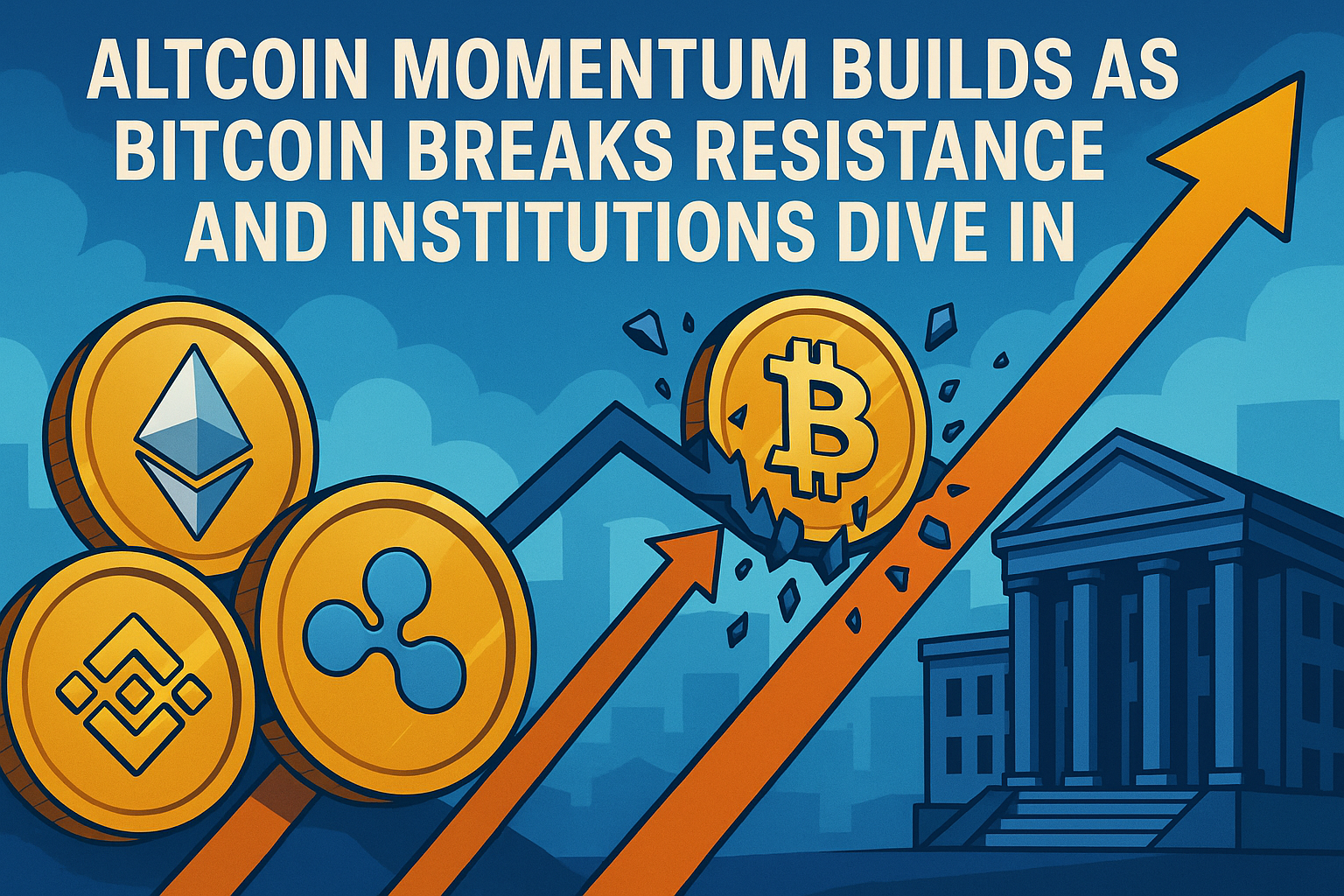Table of Contents
As the cryptocurrency industry evolves, investors are realizing the potential of alternative financial services beyond traditional systems. At the heart of this crypto finance revolution are two contrasting approaches – Decentralized Finance (DeFi) and Centralized Finance (CeFi). While both DeFi and CeFi offer innovative financial solutions, they differ in their underlying principles, governance models, and features.
In this comprehensive article, we will explore the fascinating world of DeFi and CeFi, deciphering their unique attributes, benefits, and drawbacks, to help you make informed decisions as you navigate the crypto finance landscape.
By understanding the distinctions between DeFi and CeFi options, you not only broaden your investment horizons but also unlock opportunities to capitalize on the transformative potential of the crypto ecosystem.
So, dive in and unravel the future of finance with us at Altcoin Investor!
1. Decentralized Finance (DeFi): Foundations and Operations
Decentralized Finance, or DeFi, refers to a suite of financial applications and services built on decentralized blockchain platforms, primarily Ethereum. By leveraging decentralized networks and smart contracts, DeFi aims to establish an open, accessible alternative to traditional, centralized financial systems, removing intermediaries like banks and institutions.
Some prominent DeFi applications include:
- Lending Platforms: Services like Aave and Compound facilitate the borrowing and lending of digital assets through smart contracts, allowing users to earn interest on their holdings.
- Decentralized Exchanges (DEXs): Platforms such as Uniswap and SushiSwap facilitate the direct exchange of cryptocurrencies between users without the need for a centralized order book or intermediaries.
- Yield farming: Users can earn rewards in the form of tokens or fees for providing liquidity or participating in DeFi protocols.
- Stablecoins: Decentralized stablecoins like DAI are designed to maintain a stable value in relation to a specific asset, offering a less volatile alternative for crypto transactions.
2. Centralized Finance (CeFi): Principles and Service Offerings
Centralized Finance (CeFi) constitutes financial services in the crypto industry that are provided by centralized entities like traditional banks or intermediaries. CeFi services typically involve a central party's management or control, unlike DeFi solutions that rely on distributed networks and automated processes.
Popular CeFi applications include:
- Centralized Exchanges (CEXs): Exchange platforms like Binance or Coinbase facilitate the trading of cryptocurrencies through a managed order book and often act as custodians of users' digital assets.
- Crypto Lending and Borrowing: CeFi services such as BlockFi and Celsius offer crypto-backed loans and borrowing facilities to users, often providing more competitive rates than traditional financial institutions.
- Staking Platforms: Users can stake their cryptocurrencies on centralized platforms, earning rewards or interest, similar to DeFi staking, but with the benefits and risks associated with centralized management.
3. DeFi vs. CeFi: Key Differences, Pros, and Cons
Both DeFi and CeFi have their respective benefits and drawbacks. By understanding the key distinctions, investors can make informed decisions that align with their goals and risk appetite.
Security:
- DeFi: DeFi platforms generally rely on open-source code and transparent smart contracts, which can reduce the risk of central points of failure. However, smart contracts can be vulnerable to exploits and hacks if the code is not thoroughly reviewed and audited.
- CeFi: Centralized platforms can provide robust security measures, such as cold storage and multi-signature wallets. Still, they are also susceptible to hacking, internal fraud, or platform shutdowns, resulting in potential asset loss.
Censorship Resistance and Privacy:
- DeFi: DeFi platforms generally offer higher levels of censorship resistance and privacy, thanks to decentralized networks and permissionless access. Users transact directly through smart contracts, without third-party intervention or the need to reveal personal information.
- CeFi: CeFi services often require Know Your Customer (KYC) and Anti-Money Laundering (AML) compliance, leading to more stringent identification requirements and reduced privacy.
Ease of Use and Adoption:
- DeFi: DeFi platforms can be less user-friendly than CeFi services, requiring users to interact with complex smart contracts and navigate higher technical barriers. The learning curve can deter new users from entering the DeFi space.
- CeFi: CeFi services typically offer more intuitive user interfaces and customer support, leading to easier adoption for new crypto investors or traders. However, this also means increased reliance on centralized companies and less financial autonomy.
Liquidity and Trading Volume:
- DeFi: DeFi platforms, particularly decentralized exchanges, have experienced remarkable growth in liquidity and trading volume. However, they generally lag behind their CeFi counterparts. This can lead to higher slippage and less competitive trading opportunities for users.
- CeFi: Centralized exchanges usually offer higher liquidity and trading volume, providing more favorable trading conditions and access to a broader range of digital assets for users.
4. Determining the Right Fit: DeFi, CeFi, or a Hybrid Approach?
The choice between DeFi and CeFi depends on factors such as individual risk tolerance, investment objectives, technical proficiency, and preference for financial autonomy or centralized support.
For investors who value decentralization, censorship resistance, and financial sovereignty, DeFi represents an avenue to capitalize on these ideals while exploring alternative financial services. On the other hand, those who prefer ease of use, a familiar centralized experience, and access to reliable customer support may be more comfortable with CeFi services.
Notably, many users opt for a hybrid approach, leveraging both DeFi and CeFi applications to balance the benefits and drawbacks of each, depending on their specific needs and goals.
As the crypto ecosystem matures, it's expected that the lines between DeFi and CeFi will continue to blur, paving the way for innovative solutions that cater to diverse user preferences.
The Future of Crypto Finance: Harnessing the Best of DeFi and CeFi
Navigating the ever-expanding world of crypto finance requires a solid understanding of both DeFi and CeFi solutions to make well-informed choices that fit your individual preferences and opportunities.
By familiarizing yourself with the pros and cons of each approach, you can selectively embrace these innovative platforms to capitalize on the dynamic crypto landscape, enhance your investment strategies, and shape your financial future.
Stay ahead of the curve with comprehensive insights, expert advice, and timely crypto news updates from Altcoin Investor. Empower your crypto journey with the knowledge and tools you need to thrive in the world of decentralized and centralized finance.
Subscribe to our newsletter today and let Altcoin Investor guide you to unprecedented success in the rapidly evolving crypto industry!








